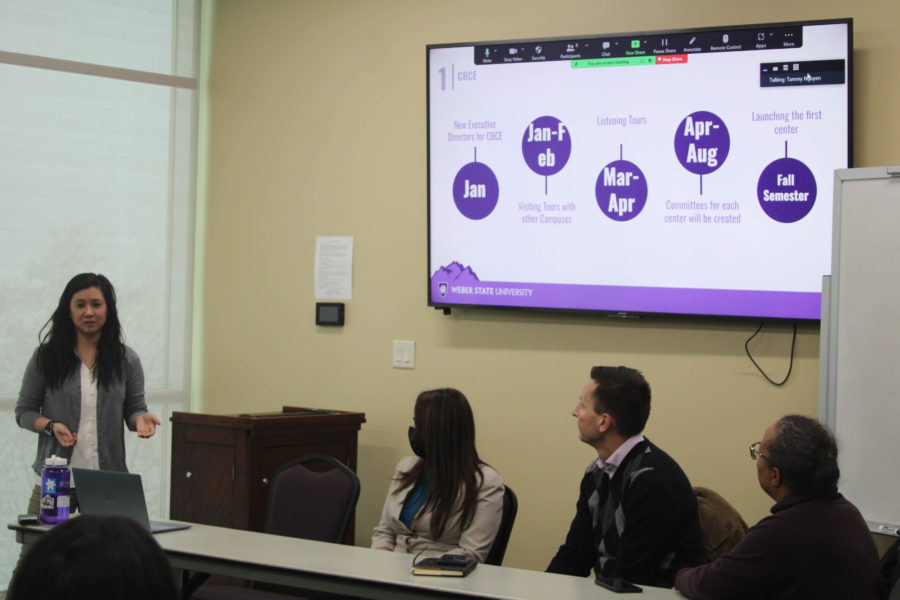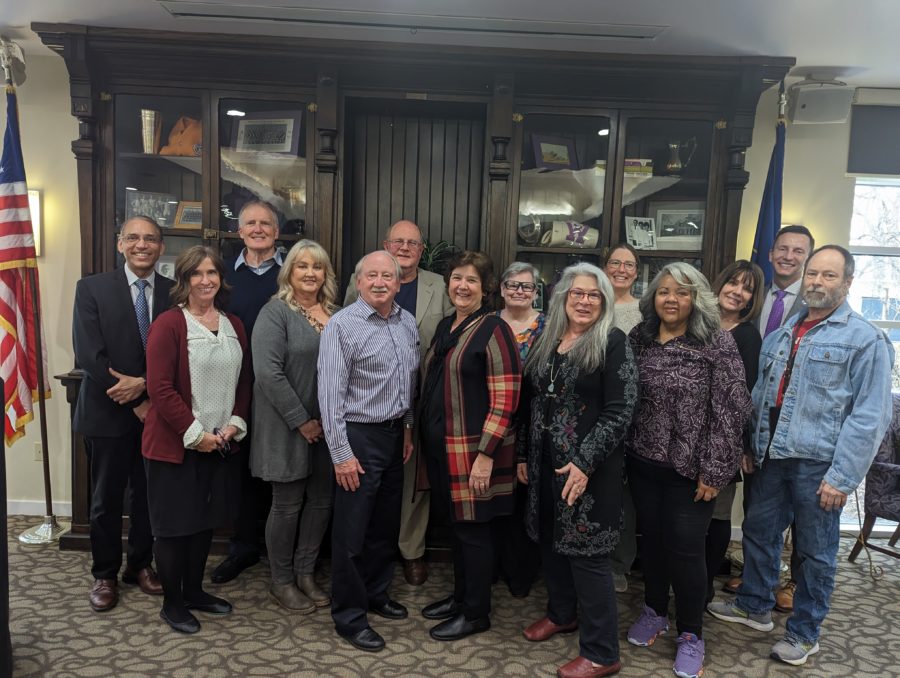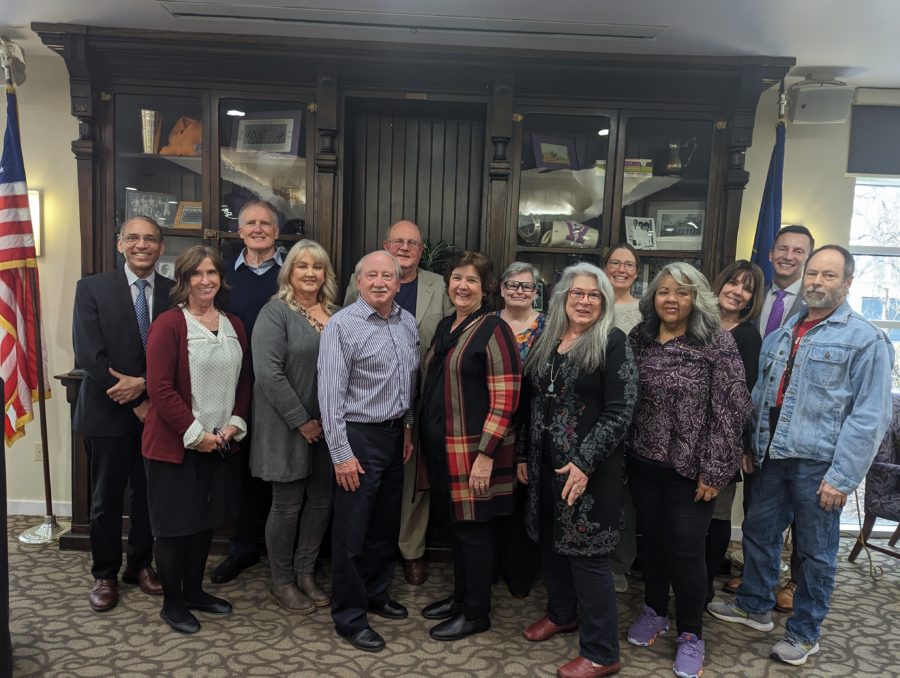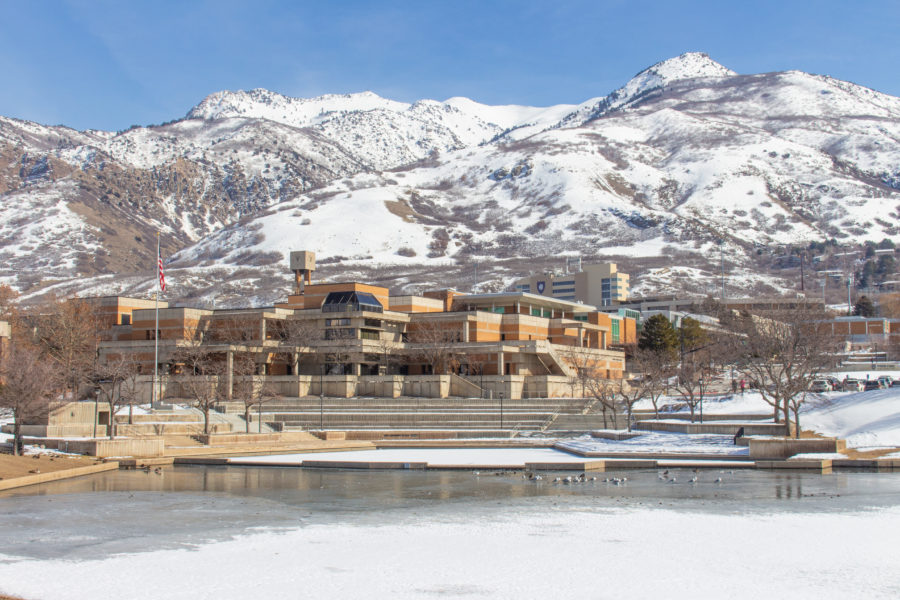When thinking of endangered species, most people often think of the panda, the African elephant or the white rhino. Here on Weber State University’s Ogden campus, a specimen of endurance lives on University Circle Road right on campus; three giant sequoias.
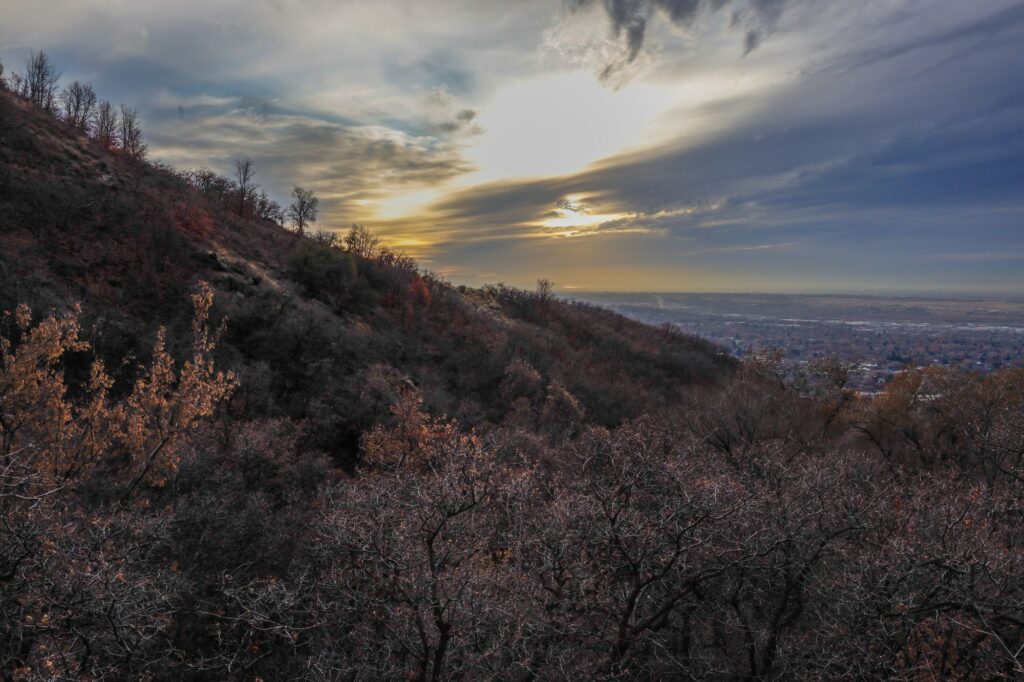
Sequoias are one of the plant kingdom’s largest species. These plants are related to the famous redwoods of California. These redwoods and their native range once spread across the Pacific Northwest stretching down into lower Colorado.
Settlement of these lands has caused the population of many indigenous species to dwindle, making the sequoia a rare sight, especially in the deserts of Utah.
Amy Roberts a member of the Salt Lake County Forestry department points out some trees around the city. As her truck takes bends through the busy streets one would imagine the trip going deep into the typical Utah mountains. However, her trip does not take her into the Uinta’s, it takes her to a park instead.
“There are dozens of these transplanted trees all around Utah,” Roberts said. “This one’s been here for 30 years or so. They do better where we can keep an eye on them and where people aren’t going to accidentally cut them down.”
Forestry efforts have done their best to save the sequoias in Utah. One of the methods used to save these trees is to relocate them. This method was used in 2008 to move WSU’s sequoias.
Troy Bell, head of Weber’s landscaping, said the move for Weber’s sequoias was difficult as moving these big trees can be dangerous.
“After decades of living in the same soil, it can be quite traumatic to move to a new place,” Bell said.
Bell said that you can tell which trees have been moved because of the cables and stakes in the ground. Due to the size of these trees, most of the cables will have to stay on for the rest of the tree’s life.
In 2011 there was a traumatic windstorm that swept through Ogden. The storm caused many large trees to be knocked over.
“Sequoias roots are actually quite wide. They can stretch twice as far as the tree’s branches,” Bell said.
This wide stance helped keep the trees upright in the storm.
In Sept. 2020 the Sequoias would be tried again as another traumatic windstorm ran through Utah. This storm was even more devastating than the previous one. Many of the trees in the area were ripped out of the soil and had to be taken down or had traumatic injuries from the event.
“There’s been severe injuries to the trunks and limbs of the other trees on campus. Our wonderful arborists are trying their best to save as many of these trees as possible. Fortunately, our endangered sequoias have made it out unscathed,” said Mark Halverson, Facilities and Campus Planning associate Vice President.
Giant sequoias, like many plants, are bisexual individuals. Instead of having male or female individuals, they produce both spores and fruit. Although this fruit is different from apples or bananas, rather they produce cones.
Although Weber is proud of its three sequoias, there are many others that are being moved and killed because of human activities.
“While some plants will greatly benefit from the changes, mostly those who are opportunistic, those happy close to human settlements, and those doing well with whatever long-term change occurs in a place, the, likely vast, majority of plants will not fare well,” Katharina Schramm, professor of botany at Weber said.
Our three giant sequoias were moved here over just 12 years ago, but they could live for thousands of years.
Schramm said that trees can restore habitats and increase soil sealing. Her department and the botany club are happy to assist anyone with questions.



